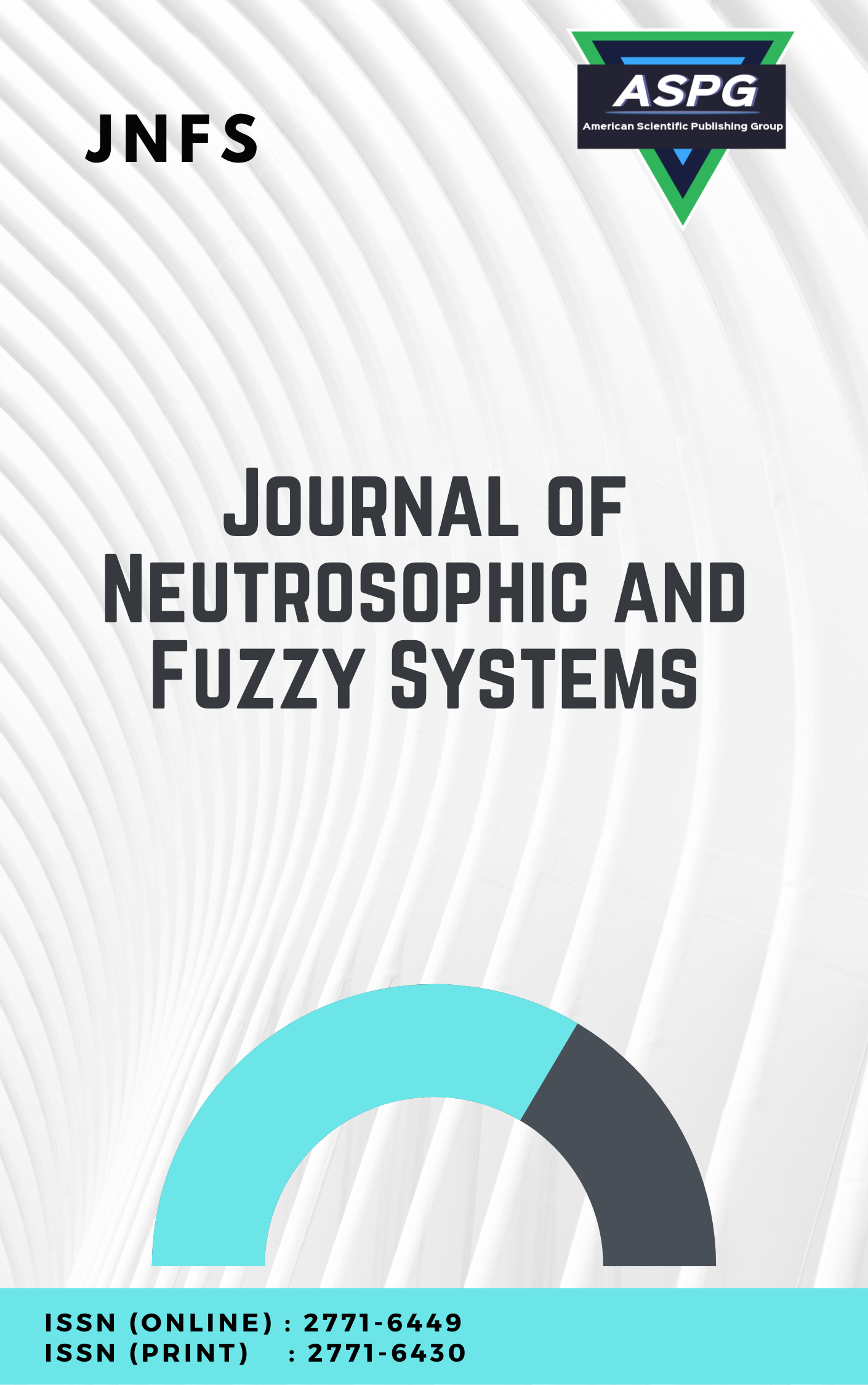

In this paper, basic concepts of semigraph is introduced based on intuitionistic set. Definition of Intuitionistic Semigraph is introduced andUnion, intersection, and complement of intuitionistic semigraph is studied with graph.
Read MoreDoi: https://doi.org/10.54216/JNFS.030102
Vol. 3 Issue. 1 PP. 19-26, (2022)
Agricultural production efficiency can be improved, the environment can be improved, and sustainable agricultural development can be achieved with smart agriculture. Several nations and businesses are devoted to developing or introducing innovative agricultural practices and technologies. As long as conventional agricultural management systems are in place, it's going to be tough for businesses to choose and apply smart agriculture solutions without running into stiff competition. As a result, businesses must weigh their options and choose a workable solution ahead of time. There is a novel fuzzy multi-criteria decision model presented in this research that may be used to evaluate the agriculture solution. We created fuzzy MARCOS, which uses the COmpromise Solution's Measurement Alternatives and Ranking Method (fuzzy MARCOS). Triangular fuzzy numbers (TFNs) linguistic dimension was also developed. According to this technique, the criteria weights used to evaluate the road network parts were calculated. Consequently, it is clear that a certain part of agriculture is affected by the study results.
Read MoreDoi: https://doi.org/10.54216/JNFS.030101
Vol. 3 Issue. 1 PP. 08-18, (2022)
In this paper, the neutrosophic crisp minimal structure which is a more general structure than the neutrosophic minimal structure is built on neutrosophic crisp sets. The necessary arguments which are neutrosophic minimal crisp open set, neutrosophic minimal crisp closed set, neutrosophic crisp minimal closure, and neutrosophic crisp minimal interior are defined and their basic properties are presented. Also, the neutrosophic crisp minimal structure subspace of neutrosophic crisp minimal structure is defined and studied some of its properties. Finally, many examples are presented.
Read MoreDoi: https://doi.org/10.54216/JNFS.030103
Vol. 3 Issue. 1 PP. 27-33, (2022)
Unlike traditional algebraic structures, where all operations are well-defined and all axioms are completely true, NeutroAlgebras and AntiAlgebras allow operations to be partially well-defined and axioms to be partially true or fully outer-defined, and axioms to be completely false. These NeutroAlgebras and AntiAlgebras represent a new research subject based on real-world examples. Since an empty set is not a subgroup of a group by observing this, the article leads to learning group neutro-topological space. We introduced the notion of a group neutro-topological space and investigated its properties.
Read MoreDoi: https://doi.org/10.54216/JNFS.030104
Vol. 3 Issue. 1 PP. 34-38, (2022)
There are several mathematical theorem and other equation which is used frequently. However many researchers or scholar unable to prove them mathematically. One of the famous example is Pythagrous theorem, Budhayana, Pingala, Fibonacci series or even (a+b)2=a2+b2+2ab. It is indeed requirement to understand the basic proof of thiese mathematical theorem and its contradictory. This paper tried to provide some basic proof for these famous theorem and its relations with existing approaches for various applications.
Read MoreDoi: https://doi.org/10.54216/JNFS.030105
Vol. 3 Issue. 1 PP. 39-53, (2022)